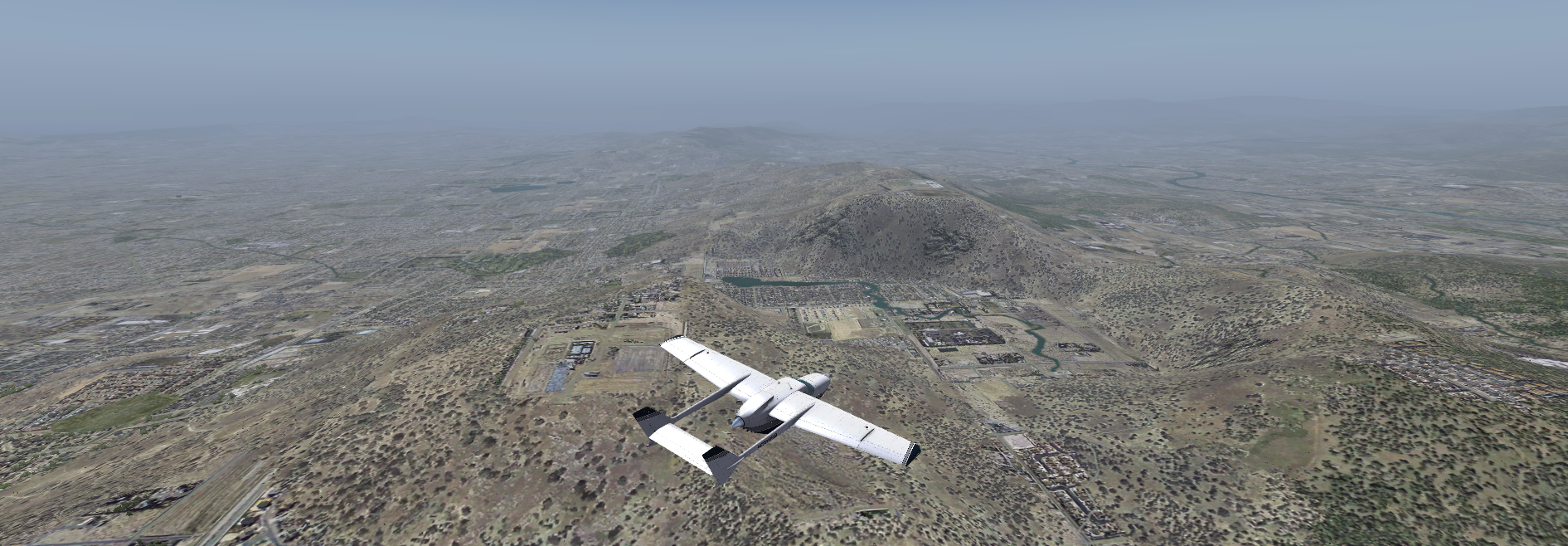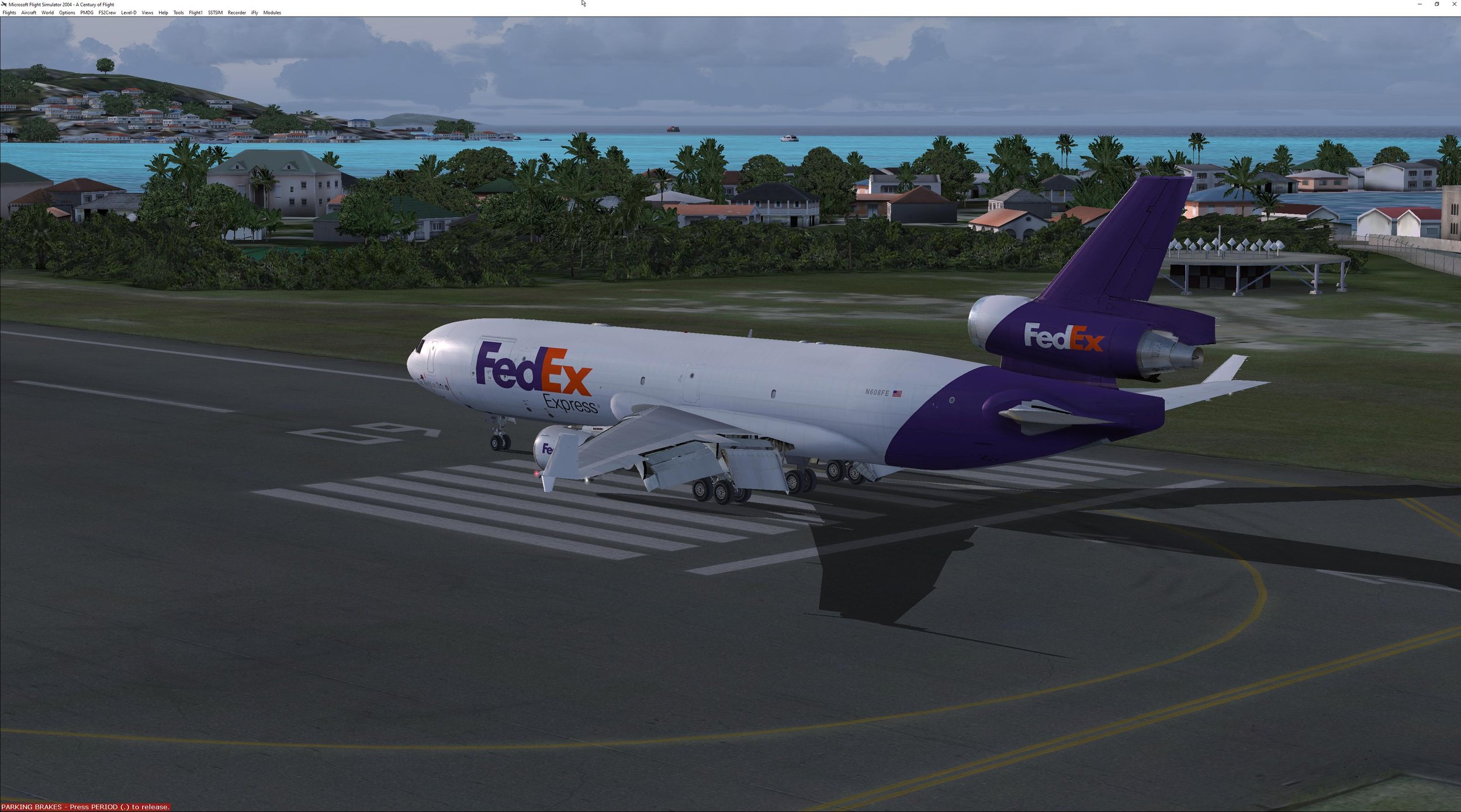I purchased a large collection of addons back in 2009-2015 for Microsoft Flight Simulator 2004 of a large variety and with much money. When FSX was released, all those addons were not compatible with it and became obsolete. Back then, FSX required very powerful computers and the poor performance made me return back to FS2004.
Later on, Lockheed-Martin picked up from where the ESP platform was left from Microsoft and released newer and improved versions as Prepar3d. The software was continuously updated breaking the addons that were purchased for the simulator.
Whenever an upgrade was released for the addons, developers often made users pay an upgrade fee. This is assuming that the addons are not abandoned by the developer.
I eventually moved on to X-Plane 11 by Laminar Research at the time where the addon market for it was starting to boom. Many simulations were very in-depth, study-level and so realistic that even pilots could use it for training. I purchased a couple addons for it. I was confident that I didn’t need my old sim anymore and deleted all my installers for FS2004 mods. My backup hard-drive failed and lost everything. I wasn’t upset because I thought I would only play X-Plane from now on.
When Flight Simulator (2020) came out, it revolutionized the way scenery was generated using photogrammetry and satellite imagery to generate a world so accurate that you could see your house in the game. However, this game is still in it’s infancy without a proper SDK. Hardly any serious addons have been release for it.
I realized that I was stuck with a bunch of addons purchased a while ago that I wasn’t using anymore. A sense of guilt ran through me because I felt that I spent money on nothing. I didn’t want to keep spending so much money (addons are getting more expensive these days) every time I upgraded. Therefore, this year, I decided to resurrect FS2004 and get all my addons back. It wasn’t that easy.
Screenshots
Finally! I’ve managed to resurrect most of my FS9 addons on Windows 10. The reason I did this was because I bought so many addons for FS9 back in 2009-2015 and I feel like I was putting them to waste if I didn’t use them at all. It took me two days to get most of my addons installed. I still have more to go. It's about 55 GB so far.
This time, I made backups for all the installers and keys on OneDrive and on an external hard drive. Despite all of this, I figure some addons are going to be eventually out of date.
Difficulty of Installation
Here’s what I discovered installing such an ancient flight simulator on a modern system:
Most FS9 products disappeared around 2016 from stores.
Addons with plain and simple installers that don’t phone home still work.
Flight1 Wrapper doesn’t always work with Windows 10. This is a known issue. Therefore, I’ve lost some addons.
Some vendors don’t provide downloads for legacy products anymore.
I had to contact some developers to get the legacy installers.
Manually generated keys are not done by the developers anymore.
Many products aren’t supported anymore (this is understandable).
Some activation servers are no longer online.
Due to the above, I had to resort to piracy to use products that I actually bought. I had to go through shady websites often in languages that I don’t understand. I sought refuse with VMWare, uBlock Origin, Sandboxie and VirusTotal to hopefully catch any malicious software. It made me reflect our reliance on online services these days. Once they’re gone we lose the software and our data.
What I miss from FS9:
2D panels which are really easy to read and navigate through. They look ugly compared to virtual cockpits but they’re so much more practical and pragmatic.
At this point, after more than 20 years of hardware evolution, frame rate is incredibly high. I can run it at 4K at 60 fps all the time in any scenario.
Excellent and busy AI traffic with the proper addons. Easy to spot with labels above them.
Probably the simulator with the most freeware addons.
The collection of payware addons is much more varied, you can essentially find scenery for any location on the planet and a huge variety of obscure planes.
You can have windows of other views and put them on a separate screen.
You can have windows of some gauges and put them on a separate screen.
No VAS issues. Still need a patch to increase it to 4GB because by default, with more demanding addons, the sim still crashes.
Flight Path view and Replay.
Planes for early history are there such as the Wright Flyer.
Flight Lesson material is in depth and well documented.
Incredibly fast load times and startup.
Meigs Field
The graphics look way more natural than modern FSX and F3D. I find that the addons for the latter tend to look more cartoony and too vibrant.
What I don’t miss from FS9:
Gauges refresh rate is terrible, especially compared to X-Plane’s ultra-smooth panels. It’s even worse in VC where some planes where the refresh rate is probably 2-4 FPS.
No good camera tool for moving around and effects. There’s only F1View and Active Camera but they leave a lot to be desired.
Flight Dynamics are absolutely terrible. It feels like you’re flying on rails and turbulence doesn’t do much.
The virtual cockpits look so bad. Almost everything is 2D and you can really tell.
So many separate executables for load management and other features. They’re integrated into the sim in new simulators.
Comparing to the amazing scenery from MSFS, FS2004 looks extremely dated and horrible. Autogen is utterly terrible. Terrain resolution leaves so much to be desired. I can’t believe one pixel is used for 4 meters squared. Scenery drawn further away is blurry mess and mesh looks terrible.
Mesh is so low resolution outside of the US. Addons that add extra resolution are buggy because of improper airport altitudes and flat airports.
Almost all decent scenery is payware.
Again, it’s ancient software now.
Compared to modern addons, system depth isn’t that deep.
Need an external tool for flight planning. Forget about SID and STARS with the default one. I use SimBrief as an alternative.
The incredibly invasive anti-piracy mechanisms. Some they even detect false positives and do something like delete folders in your FS9 install or delete the addon. I had to use virtual machines to test some of them. I’ll leave this detailed in another post soon.
Need to run as administrator for most addons to work.
No HDPI support. Everything is tiny.
Selecting aircraft don’t always work
Default ATC is useless. (I mean, it still is in X-Plane 11 and MSFS2020.
The game is unstable and needs constant restarting.
After being spoiled by X-Plane and even more with MSFS, the FS9 graphics are really really starting to look dated.
Conclusion
It feels like quite an achievement to get all this running and definitely worth the time. I now have access to most of the software that I purchased and learned to love in the past. Looks like this will keep me busy for a while.
I still play and enjoy X-Plane and MSFS and have a collection of addons for them too. I don’t believe that you should pick one simulator and live with it. There’s nothing wrong with having multiple ones as long as you have the disk space!
Recommended Addons
Level-D Simulations - The 767: This is a good balance between a study level and a casual simulation. Very easy to learn with nice documentation and example flights. Quite old but a classic.
iFly Jets - 737NG and 747: The old PMDG airliners have been discontinued. This is a good replacement and up-to-par with the current PMDG simulations.
Leonardo - Fly The Maddog SP2: Probably one of the most complex simulations for FS2004. It is a discontinued but if you look hard enough "online" you'll find it.
PMDG - MD-11: This is probably my favourite airliner simulation. You can find DVD of it on eBay but also "online". PMDG discontinued it because apparently, it didn't sell really well. I call bullshit on this and believe that it is due to a developer debacle. The main developer (Lefteris Kalamaras) of the plane left and they couldn't support it anymore. Here’s some help.
SSTSIM - CONCORDE: Very detailed Concorde with a very immersive feel. Simulates the majority of systems but not all of them. This is more in-depth than the PSS one.
Aerosoft - Piper Cheyenne: A really in-depth dual turboprop simulation.
RealAir: Citabria/SF-260 and Spitfire: Simple planes but very realistic flight dynamics. Plane rolls-over in stall and probably the only simulation that I've tried that simulates sideslips.
VRS - F/A-18E Superbug: If you ask the developer very nicely, you will get a copy for FS9. This is the most in-depth military aircraft even more than the DCS version.
PILOTS - FS Global Real Weather: This is a great replacement to ActiveSky Evolution. It's still supported and works with FS2004.
Matthias Neusinger - FS Recorder: A million times between than the integrated replay in FS9. Much smoother.
Pablo Diaz - HDEv2: This is freeware, you can find it on AVSIM. It enhances the sky colours and clouds dramatically. I find it to be less cartoonish and subtle than REX.
FSAddon - Glacier Bay Alaska/Canada: Another freeware that you can find on AVSIM. It replaces a good portion of Alaska and Canada with more detailed mesh, textures and landclass.
Flight One Software - Ultimate Traffic: My favourite AI traffic enhancement. I find it stable, provides good density and good performance. There are many freeware alternatives on the Internet.
Flight One Software - Ground Environment Professional: Replacement ground textures. Looks much better than the default but it won't work around the terrible ground resolution in FS9.
Flight One Software - Ultimate Terrain: Highly improved landclass, rivers, roads, etc for Alaska, Canada, USA and Europe.
















